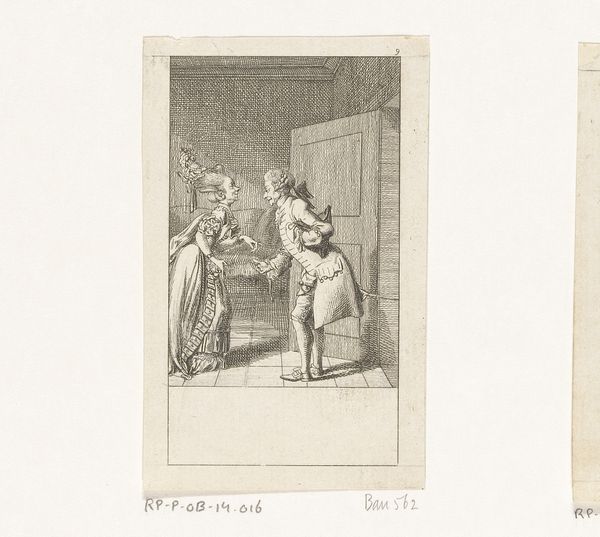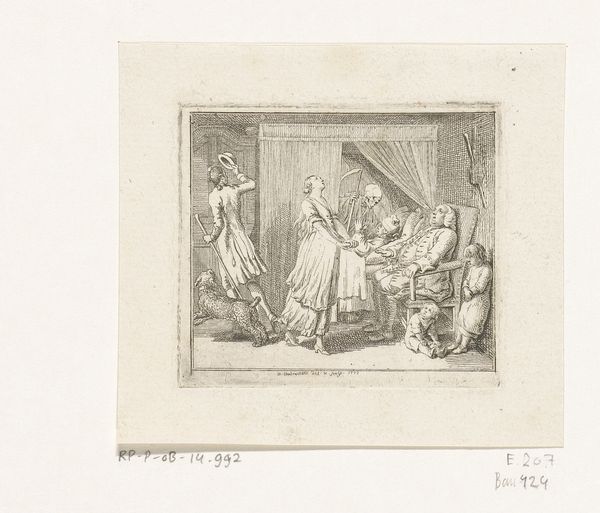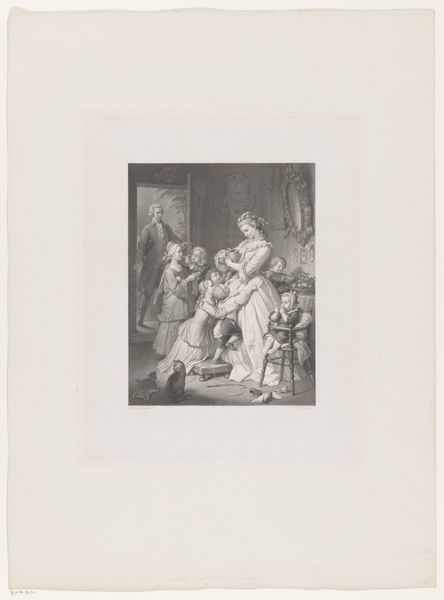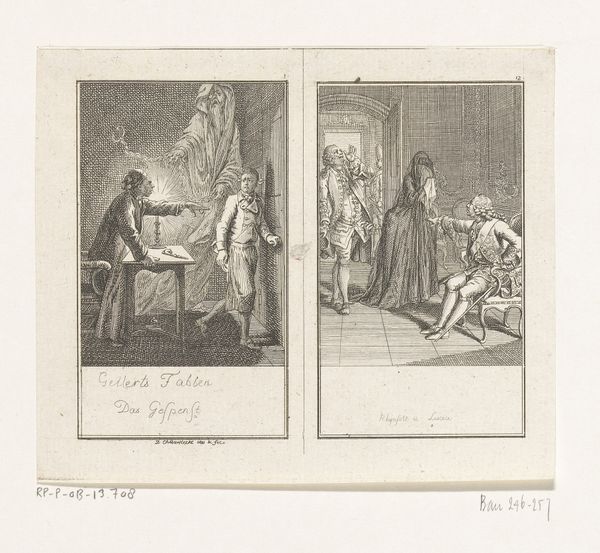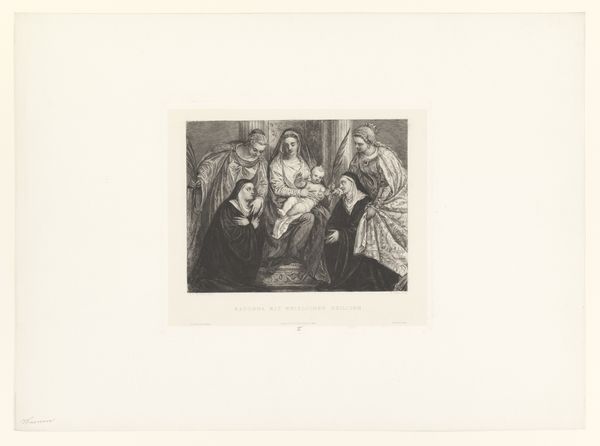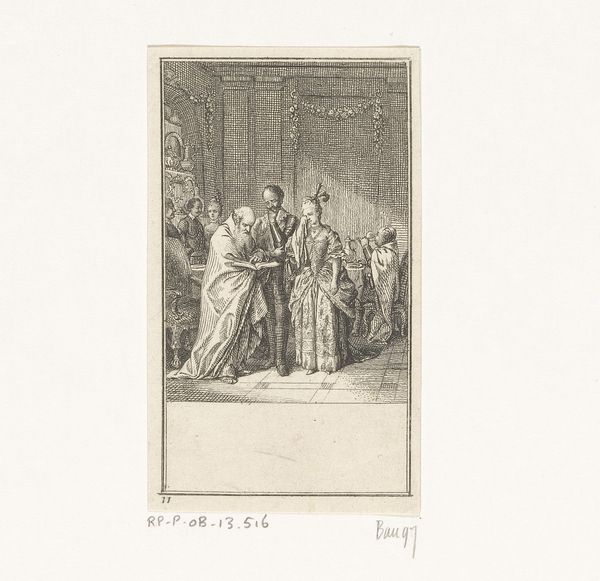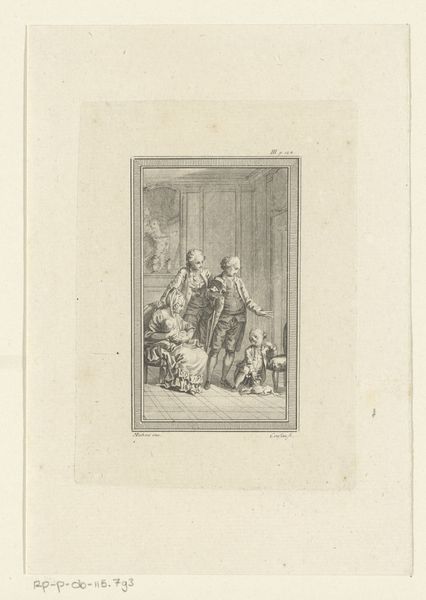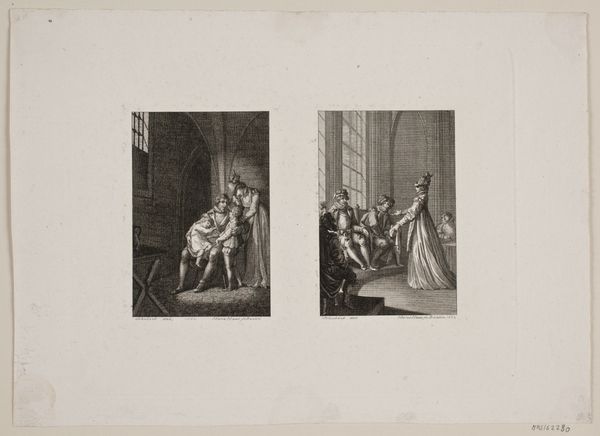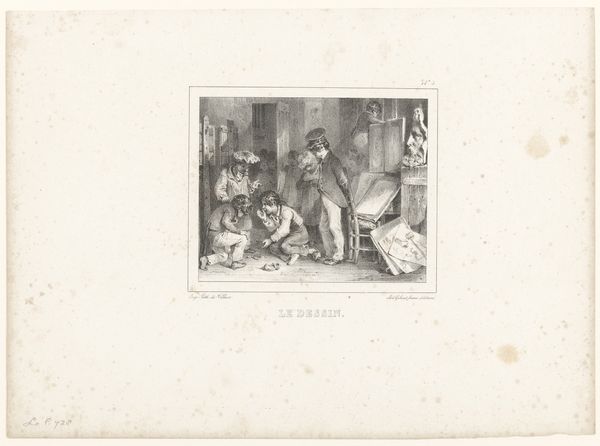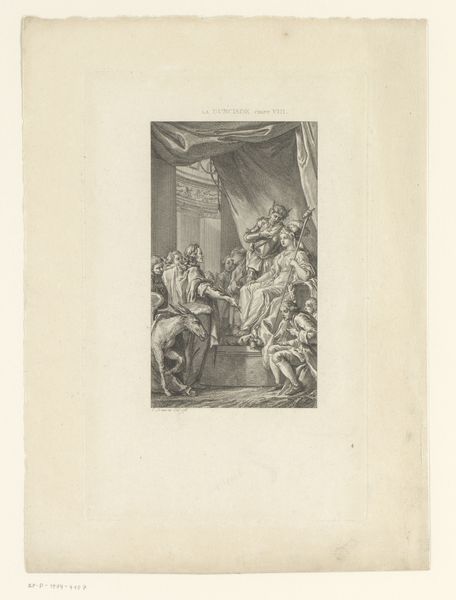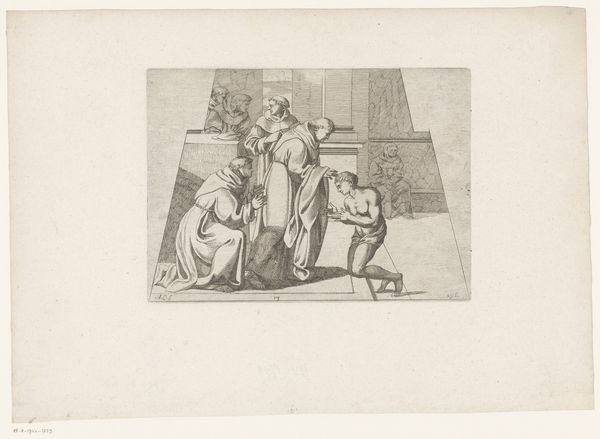
print, engraving
#
neoclacissism
# print
#
old engraving style
#
genre-painting
#
engraving
Dimensions: height 65 mm, width 83 mm
Copyright: Rijks Museum: Open Domain
Curator: We're looking at "Lotte snijdt brood voor zes kinderen," or "Lotte Cutting Bread for Six Children," a work created by Daniel Nikolaus Chodowiecki in 1776. The print is currently held at the Rijksmuseum. Editor: My immediate impression is one of careful social documentation rendered in a very classical style. It looks almost clinical, despite depicting such a vibrant domestic scene. Curator: Exactly. Note how the composition is so neatly organized. The architecture creates strong verticals and horizontals. The arrangement of figures follows a carefully orchestrated pattern. Consider how the central figure of Lotte provides a fulcrum around which the scene unfolds. The children become variations on a compositional theme, reflecting neoclassical principles of order and harmony. Editor: But it’s all an illusion, isn't it? This controlled aesthetic stands in contrast to the reality of labor, and the material circumstances of 18th-century family life, no? Chodowiecki may idealize the scene, but engraving involved manual skill, demanding a repetitive action – one far from the sanitized aristocratic setting within the picture. I'm intrigued by the division of labor. How bread itself shifts from daily provision to symbol, from substance to picturesque object. Curator: A relevant observation, and you see how the precise, clean lines enhance a sense of order and rationality so valued in Neoclassicism. This isn't just a snapshot; it's a carefully constructed representation imbued with allegorical intent, perhaps a comment on the responsibilities and idealized virtue of motherhood. The linearity flattens the image plane. Editor: The materials used in the printmaking process offer so much context here. Consider the cost and distribution of prints. How would images of family dynamics, specifically Lotte’s bread cutting activity, reflect shifts in domestic and social values? What stories do they conceal? We can glimpse these narratives, even within such carefully framed compositions. The stark medium emphasizes a contrast, that labor sustains idealized life, creating tangible sustenance from abstract aspiration. Curator: I would argue that to dwell excessively on those material facets risks eclipsing the artistic achievements found here, particularly the effective balance, use of line and form, and the overall compositional success inherent within it. Editor: And for me, lingering solely on style detaches it from that material base, the hands that made both the art and that bread. The piece, though rendered using precise, Neoclassical form, speaks volumes about broader social contexts in the era it was created.
Comments
No comments
Be the first to comment and join the conversation on the ultimate creative platform.
